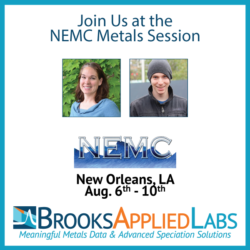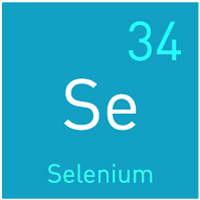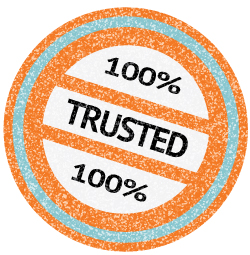Jul 19, 2018
 Russ Gerads and Hakan Gürleyük recently co-authored a publication with scientists from Exponent, Inc. entitled, “Metals Measurements in Body Tissues and Fluids: Toxicological and Clinical Importance of Standardizing Quality Analytical Methods for Differentiating Cobalt Partitioning on a Molecular Level.” This article was published in a collection of 21 peer-reviewed papers that cover retrieval analysis of medical implants as well as host issues that may contribute to clinical outcomes where revision is the endpoint. You can read the abstract and purchase the article at the ASTM International website here.
Russ Gerads and Hakan Gürleyük recently co-authored a publication with scientists from Exponent, Inc. entitled, “Metals Measurements in Body Tissues and Fluids: Toxicological and Clinical Importance of Standardizing Quality Analytical Methods for Differentiating Cobalt Partitioning on a Molecular Level.” This article was published in a collection of 21 peer-reviewed papers that cover retrieval analysis of medical implants as well as host issues that may contribute to clinical outcomes where revision is the endpoint. You can read the abstract and purchase the article at the ASTM International website here.
Jul 19, 2018
 At this year’s National Environmental Monitoring Conference, BAL’s Vice President, Annie Carter will be chairing two sessions on “Metals and Metals Speciation Analysis in Environmental Samples.” The conference will take place August 6th – 10th in New Orleans, LA, and due to “overwhelming demand,” the topic had to split onto two different days, the 7th and the 9th. We love hearing other people are as excited about metals analysis as we are! In addition, Annie will be presenting on “Determining Elemental Mercury in Soils by Selective Volatilization” on Tuesday morning and our Trace Metals Group Lead, Brian Smith, will be presenting on “Method Comparison for Bioaccessible Lead and Arsenic in Soils” in the Tuesday session. Please come attend one or both of the sessions or Contact Us if you would like more information.
At this year’s National Environmental Monitoring Conference, BAL’s Vice President, Annie Carter will be chairing two sessions on “Metals and Metals Speciation Analysis in Environmental Samples.” The conference will take place August 6th – 10th in New Orleans, LA, and due to “overwhelming demand,” the topic had to split onto two different days, the 7th and the 9th. We love hearing other people are as excited about metals analysis as we are! In addition, Annie will be presenting on “Determining Elemental Mercury in Soils by Selective Volatilization” on Tuesday morning and our Trace Metals Group Lead, Brian Smith, will be presenting on “Method Comparison for Bioaccessible Lead and Arsenic in Soils” in the Tuesday session. Please come attend one or both of the sessions or Contact Us if you would like more information.
Jun 21, 2018
 Efficient selenium treatment and understanding ecological risks associated with the contaminant requires detailed molecular information to make educated decisions. As with any element, the molecular form of selenium, or chemical species, dictates how the element will interact with the environment and respective organisms. To support the increasing demands of the marketplace, Brooks Applied Labs continues to expand the suite of selenium species our proprietary methods can quantitate. Two organic selenium species, dimethylselenoxide and methaneselenonic acid, have been added to our capabilities to allow our clients to better understand the bioaccumulation of selenium and risk to the relevant aquatic habitats.
Efficient selenium treatment and understanding ecological risks associated with the contaminant requires detailed molecular information to make educated decisions. As with any element, the molecular form of selenium, or chemical species, dictates how the element will interact with the environment and respective organisms. To support the increasing demands of the marketplace, Brooks Applied Labs continues to expand the suite of selenium species our proprietary methods can quantitate. Two organic selenium species, dimethylselenoxide and methaneselenonic acid, have been added to our capabilities to allow our clients to better understand the bioaccumulation of selenium and risk to the relevant aquatic habitats.
More than a dozen selenium species have been identified in both natural and anthropogenically-impacted waters, including volatile forms like dimethylselenide and reduced forms like selenocyanate. As analytical technology advances, more information regarding the complexity of selenium chemistry is available. This is especially important in situations where biological activity can produce complex organic selenium species, as found in natural environments as well as bioreactor treatment systems. Government agencies in North America and other parts of the world are increasing their understanding regarding the implications of the different molecular forms of selenium and have already implemented regulations accordingly.
BAL currently supports the identification and quantitation of the following selenium species:
- Selenite
- Selenate
- Selenocyanate
- Methylselenocysteine
- Selenomethionine
- Dimethylselenide
- Dimethyldiselenide
- Selenosulfate
- Methylseleninic acid
- Dimethylselenoxide
- Methaneselenonic acid
- Selenomethionine oxide
- Selenoproteins
- Elemental selenium
- Other more esoteric selenium species
When you work with Brooks Applied Labs, you not only benefit from our state-of-the-art instrumentation and robust methods, but also from our experienced staff who can provide guidance regarding how your data objectives align with today’s technology. Including speciation analyses alongside more traditional total elemental analyses can provide you with greater confidence in your data, particularly when the results of these two separate analyses agree. And in cases where the two analyses may differ, our staff will work with you to interpret the results and recommend alternative approaches to identify the source of the discrepancy. To learn more about how partnering with Brooks Applied Labs can help ensure the success of your project, please contact us today!
Jun 21, 2018
 Last week, Brooks Applied Labs presented at the Mine Water Solutions conference in Vancouver on the role of speciation analysis for treatability and to ensure compliance with aquatic life criteria for selenium. You can view our presentation here or feel free to contact us to discuss how speciation analysis can help ensure the success of your project!
Last week, Brooks Applied Labs presented at the Mine Water Solutions conference in Vancouver on the role of speciation analysis for treatability and to ensure compliance with aquatic life criteria for selenium. You can view our presentation here or feel free to contact us to discuss how speciation analysis can help ensure the success of your project!
May 17, 2018
 Imagine having to dispose of $150,000 of growth media or initiate a costly groundwater contamination investigation due to contaminated sample containers or labware. Does this sound familiar? If not, you are one of a few lucky individuals that it has not happened to…yet. Brooks Applied Labs has supported our clients with acid cleaned and lot tested sampling materials for decades to ensure analytical results represent what is in the sample and not the surrounding environment. Our expertise in trace element analyses demands a detailed understanding of contamination sources and how to mitigate them. This translates not just to quality, but trust that our clients have in BAL for supporting all their sampling and sample archival needs. Whether you are performing an environmental investigation, clinical trial, R&D for biopharmaceuticals, or managing quality systems for industrial applications, it is within your best interest to contact us today to mitigate risk and maximize your potential for success.
Imagine having to dispose of $150,000 of growth media or initiate a costly groundwater contamination investigation due to contaminated sample containers or labware. Does this sound familiar? If not, you are one of a few lucky individuals that it has not happened to…yet. Brooks Applied Labs has supported our clients with acid cleaned and lot tested sampling materials for decades to ensure analytical results represent what is in the sample and not the surrounding environment. Our expertise in trace element analyses demands a detailed understanding of contamination sources and how to mitigate them. This translates not just to quality, but trust that our clients have in BAL for supporting all their sampling and sample archival needs. Whether you are performing an environmental investigation, clinical trial, R&D for biopharmaceuticals, or managing quality systems for industrial applications, it is within your best interest to contact us today to mitigate risk and maximize your potential for success.
May 17, 2018
 Next month BAL will have an exhibit booth at BIO International in Boston, June 4 – 7. This conference attracts more than 16,000 biotechnology and pharma industry attendees to discover new opportunities related to drug discovery, biomanufacturing, genomics, biofuels, nanotechnology and cell therapy. Come see Russ Gerads and Jamie Fox at Booth 1808!
Next month BAL will have an exhibit booth at BIO International in Boston, June 4 – 7. This conference attracts more than 16,000 biotechnology and pharma industry attendees to discover new opportunities related to drug discovery, biomanufacturing, genomics, biofuels, nanotechnology and cell therapy. Come see Russ Gerads and Jamie Fox at Booth 1808!
 The following week, Ben Wozniak will be speaking at the Mine Water Solutions 2018 conference in Vancouver, B.C. on “The Role of Speciation for Selenium Treatment and Compliance with Site-Specific Aquatic Life Criteria.” This conference will examine a wide range of water issues and provide a forum for discussion about successful practices enabling responsible mining to be undertaken in challenging environments. Contact Us through the website or follow us on Twitter to let us know if you will be at either of these meetings so we can connect!
The following week, Ben Wozniak will be speaking at the Mine Water Solutions 2018 conference in Vancouver, B.C. on “The Role of Speciation for Selenium Treatment and Compliance with Site-Specific Aquatic Life Criteria.” This conference will examine a wide range of water issues and provide a forum for discussion about successful practices enabling responsible mining to be undertaken in challenging environments. Contact Us through the website or follow us on Twitter to let us know if you will be at either of these meetings so we can connect!
 Russ Gerads and Hakan Gürleyük recently co-authored a publication with scientists from Exponent, Inc. entitled, “Metals Measurements in Body Tissues and Fluids: Toxicological and Clinical Importance of Standardizing Quality Analytical Methods for Differentiating Cobalt Partitioning on a Molecular Level.” This article was published in a collection of 21 peer-reviewed papers that cover retrieval analysis of medical implants as well as host issues that may contribute to clinical outcomes where revision is the endpoint. You can read the abstract and purchase the article at the ASTM International website here.
Russ Gerads and Hakan Gürleyük recently co-authored a publication with scientists from Exponent, Inc. entitled, “Metals Measurements in Body Tissues and Fluids: Toxicological and Clinical Importance of Standardizing Quality Analytical Methods for Differentiating Cobalt Partitioning on a Molecular Level.” This article was published in a collection of 21 peer-reviewed papers that cover retrieval analysis of medical implants as well as host issues that may contribute to clinical outcomes where revision is the endpoint. You can read the abstract and purchase the article at the ASTM International website here.

 Efficient selenium treatment and understanding ecological risks associated with the contaminant requires detailed molecular information to make educated decisions. As with any element, the molecular form of selenium, or chemical species, dictates how the element will interact with the environment and respective organisms. To support the increasing demands of the marketplace, Brooks Applied Labs continues to expand the suite of selenium species our proprietary methods can quantitate. Two organic selenium species, dimethylselenoxide and methaneselenonic acid, have been added to our capabilities to allow our clients to better understand the bioaccumulation of selenium and risk to the relevant aquatic habitats.
Efficient selenium treatment and understanding ecological risks associated with the contaminant requires detailed molecular information to make educated decisions. As with any element, the molecular form of selenium, or chemical species, dictates how the element will interact with the environment and respective organisms. To support the increasing demands of the marketplace, Brooks Applied Labs continues to expand the suite of selenium species our proprietary methods can quantitate. Two organic selenium species, dimethylselenoxide and methaneselenonic acid, have been added to our capabilities to allow our clients to better understand the bioaccumulation of selenium and risk to the relevant aquatic habitats.
 Imagine having to dispose of $150,000 of growth media or initiate a costly groundwater contamination investigation due to contaminated sample containers or labware. Does this sound familiar? If not, you are one of a few lucky individuals that it has not happened to…yet. Brooks Applied Labs has supported our clients with acid cleaned and lot tested sampling materials for decades to ensure analytical results represent what is in the sample and not the surrounding environment. Our expertise in trace element analyses demands a detailed understanding of contamination sources and how to mitigate them. This translates not just to quality, but trust that our clients have in BAL for supporting all their sampling and sample archival needs. Whether you are performing an environmental investigation, clinical trial, R&D for biopharmaceuticals, or managing quality systems for industrial applications, it is within your best interest to
Imagine having to dispose of $150,000 of growth media or initiate a costly groundwater contamination investigation due to contaminated sample containers or labware. Does this sound familiar? If not, you are one of a few lucky individuals that it has not happened to…yet. Brooks Applied Labs has supported our clients with acid cleaned and lot tested sampling materials for decades to ensure analytical results represent what is in the sample and not the surrounding environment. Our expertise in trace element analyses demands a detailed understanding of contamination sources and how to mitigate them. This translates not just to quality, but trust that our clients have in BAL for supporting all their sampling and sample archival needs. Whether you are performing an environmental investigation, clinical trial, R&D for biopharmaceuticals, or managing quality systems for industrial applications, it is within your best interest to 